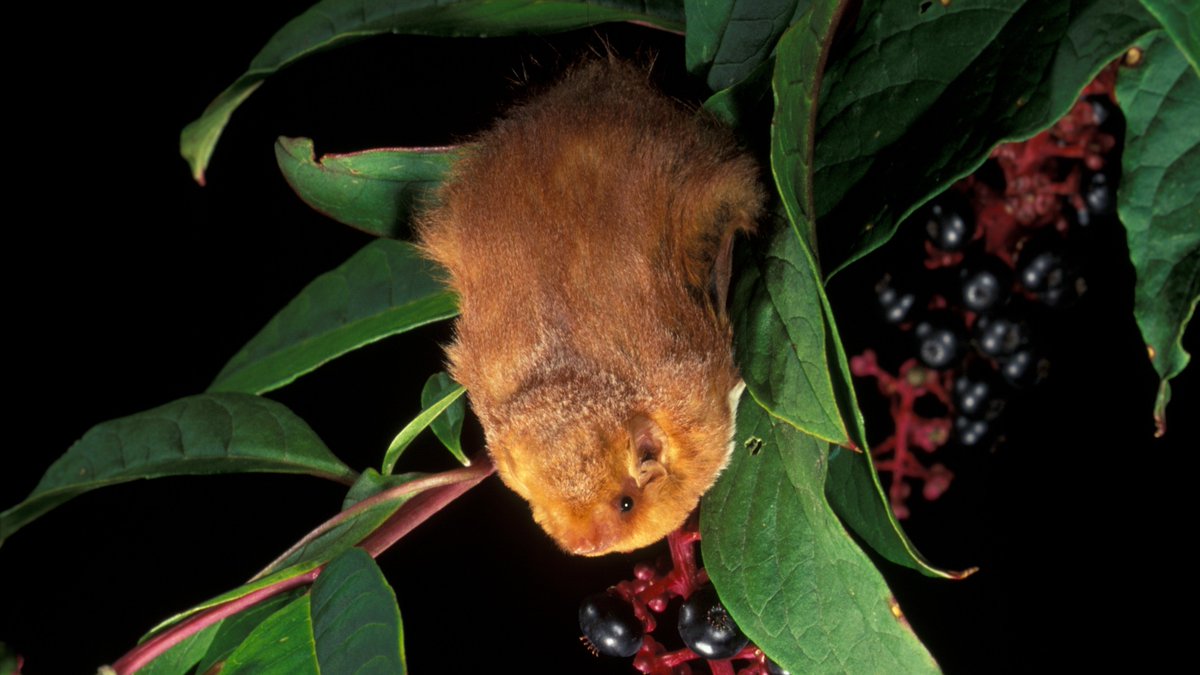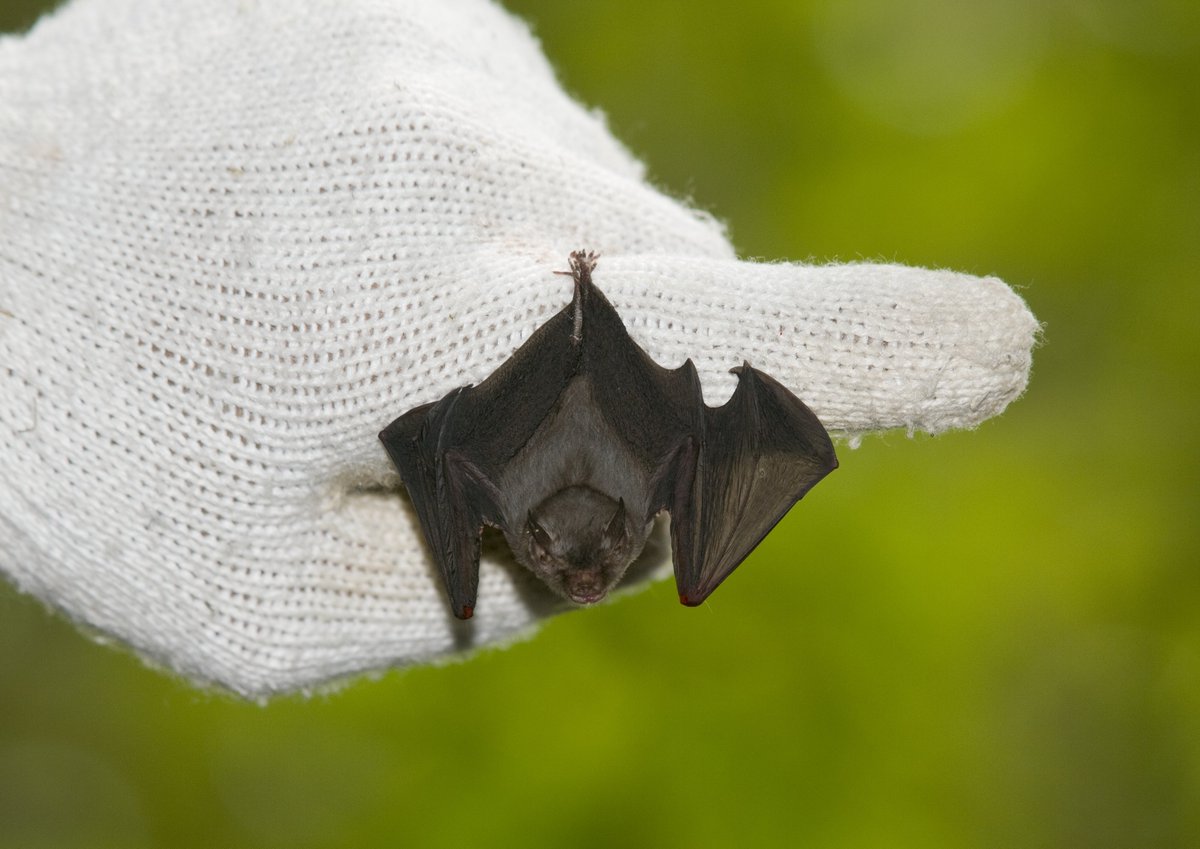
[Tweet by @BatsForLife] Time for some Bat Basics!
1) There are over 1400 species of bats. Look at some of the amazing diversity!
Yellow-winged bat (Dan Logen/Bat Conservation International); Spectacled flying fox; Eastern red bat; Mexican long-nosed bat (both J. Scott Altenbach)



1) There are over 1400 species of bats. Look at some of the amazing diversity!
Yellow-winged bat (Dan Logen/Bat Conservation International); Spectacled flying fox; Eastern red bat; Mexican long-nosed bat (both J. Scott Altenbach)




@BatsForLife [Tweet by @BatsForLife]
2) Bats are found on every continent except Antarctica in all habitats except polar regions, extreme deserts, and some small islands. There are bats in Alaska, Siberia, Hawaii (the only native mammal in the state!), and all over the world!
2) Bats are found on every continent except Antarctica in all habitats except polar regions, extreme deserts, and some small islands. There are bats in Alaska, Siberia, Hawaii (the only native mammal in the state!), and all over the world!
[Tweet by @BatsForLife]
3) Bats can fly but are not birds. They are the only true flying mammal ("flying" squirrels just glide🙂). They are also NOT rodents or even very closely related to rodents. So no more calling them "rats with wings"!
📸: Marianas flying fox by Yushi Osawa
3) Bats can fly but are not birds. They are the only true flying mammal ("flying" squirrels just glide🙂). They are also NOT rodents or even very closely related to rodents. So no more calling them "rats with wings"!
📸: Marianas flying fox by Yushi Osawa

[Tweet by @BatsForLife]
4) Bat moms do not have litters; most give birth to ONLY 1 PUP PER YEAR!! That's one reason why conservation is so hard: it takes a LONG time to rebound populations.
Check out this video of a bat mom with her pup! @SmithsonianChan
4) Bat moms do not have litters; most give birth to ONLY 1 PUP PER YEAR!! That's one reason why conservation is so hard: it takes a LONG time to rebound populations.
Check out this video of a bat mom with her pup! @SmithsonianChan
[Tweet by @BatsForLife]
5) Some bats are mostly solitary, but many are colonial & roost in groups small (several bats) to large (thousands to millions).
Curious how bat moms find their pups among thousands of others? Check out this video by @NatGeoWild!
5) Some bats are mostly solitary, but many are colonial & roost in groups small (several bats) to large (thousands to millions).
Curious how bat moms find their pups among thousands of others? Check out this video by @NatGeoWild!
[Tweet by @BatsForLife]
6) So where exactly do #bats live? Yes, many do live in caves. But others live in tree hollows, under bark, hanging from tree branches, in rock crevices, in buildings, or under bridges! 🏔️🌳🏠🌉
6) So where exactly do #bats live? Yes, many do live in caves. But others live in tree hollows, under bark, hanging from tree branches, in rock crevices, in buildings, or under bridges! 🏔️🌳🏠🌉
[Tweet by @BatsForLife]
7) What do #bats eat? Most (~70%) eat insects. Others eat fruit & others eat nectar from flowers. Some hunt/eat animals like frogs, fish, & other mammals. Only 3 species out of 1400+ are vampire bats that eat blood.
📸: J. Scott Altenbach


7) What do #bats eat? Most (~70%) eat insects. Others eat fruit & others eat nectar from flowers. Some hunt/eat animals like frogs, fish, & other mammals. Only 3 species out of 1400+ are vampire bats that eat blood.
📸: J. Scott Altenbach



[Tweet by @BatsForLife] Final Basic Bat Fact before we move on to bats' benefits!
8) "Blind as a bat" is a TOTAL myth! ALL bats have eyes and can see better than us at night. Some (but not all) also use echolocation to help them navigate even better.
8) "Blind as a bat" is a TOTAL myth! ALL bats have eyes and can see better than us at night. Some (but not all) also use echolocation to help them navigate even better.
@threadreaderapp unroll
[Tweet by @BatsForLife]
You can find this full unrolled thread on "Bat Basics" here:
threadreaderapp.com/thread/1343986…
#Bats #BatConservation
You can find this full unrolled thread on "Bat Basics" here:
threadreaderapp.com/thread/1343986…
#Bats #BatConservation
• • •
Missing some Tweet in this thread? You can try to
force a refresh





